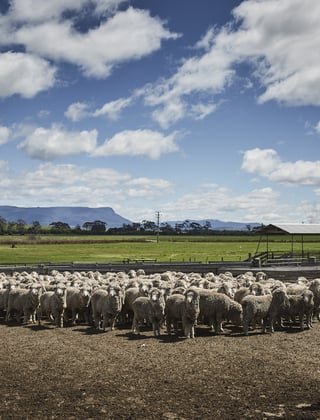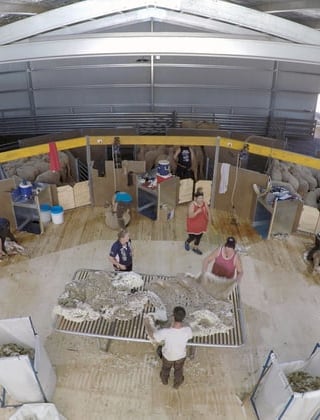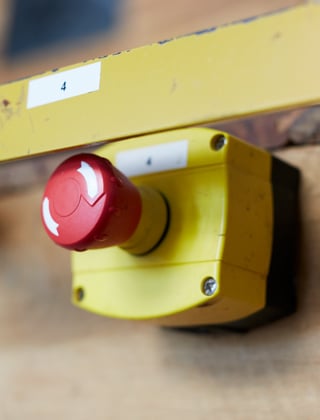Shearing shed safety program in action
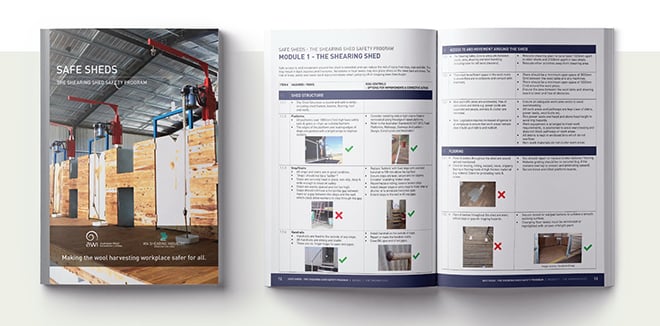
The shearing shed safety program SafeSheds, which includes a best practice guide and checklists, is making the wool harvesting workplace safer for shed workers. The resources are available for free to woolgrowers across Australia.
SafeSheds was launched in November last year to improve safety in shearing sheds. It is now being used across the country by many woolgrowers and shearing contractors to help them assess the safety of their shearing sheds, thereby enabling the woolgrower to create a program to rectify any safety hazards, improve working conditions and comply with modern workplace standards.
While safe shearing sheds help attract people into the industry, retain current staff and extend the longevity of their careers, they also improve industry productivity and profitability. By planning and documenting the improvements and steps to control risk, woolgrowers will be able to provide direct evidence of efforts in managing safety as required by relevant State Workplace Health and Safety Legislation.
However, it is important to note that SafeSheds is a self-assessment guide and not a formal audit.
Developed by AWI and WA Shearing Industry Association, SafeSheds harnesses the support of industry including WoolProducers Australia, Pastoralists & Graziers WA, WAFarmers and Shearing Contractors’ Association of Australia.
Taking safety seriously
The launch of SafeSheds was reported in the December edition of Beyond the Bale, and one of the woolgrowers that read the article and acted upon it is Jason Stokes from the Mid West region of Western Australia.
Jason is a mixed farmer from Nanson in the Chapman Valley, between Geraldton and Northampton. His farming operation includes sheep, joining about 6,500 ewes each year, and broadacre cropping of about 4,000 hectares.
The family property, ‘Mt Erin’, was purchased in 1964 by Jason’s grandparents, and Jason and his wife Renaye took over the running of the property in 2010 from Jason’s parents Barry and Margaret.
Mt Erin Station was established 1851 in what was then known as Paradise Valley. The current shearing shed is about 50 years old and it is starting to come to the end of its natural life. It was originally a four-stand shed but has been converted to five stands, however Jason says that with the thousands of sheep being shorn in it each year it really needs six stands.
Jason is beginning to consider building a new shed (and is taking a close look at the AWI’s Shearing Shed Design – see page 50), but in the meantime he is keen to ensure that his current shed is as safe as it can be.
“We take the safety of our shearers and wool handlers seriously. So for instance, we have previously installed emergency stops so anybody can turn off the shearing machines if a shearer loses control of a handpiece. But the SafeSheds program enabled us to double check that our shed facilities are up to scratch and best practice,” Jason said.
“Plus we currently have a worker’s compensation claim from a crutching contractor, so we are looking to ensure that moving forward we have done everything possible to provide a safe workplace.”
Useful tool to help assess shed safety
“Seeing the article in Beyond the Bale about the SafeSheds program was very timely and so I downloaded the app version of SafeSheds tool to my iPad and I used it to help me assess our shed. While it turned out that the shed was on the whole in accordance with best practice, it did identify a few things that we could improve,” Jason said.
“Most of the changes were easily carried out, such as providing a bright stripe for the side of the ramp and top step to improve visibility. But there were a couple of issues raised that I was less confident in making decisions about myself, such as regarding the drag distance from the back of the catching pen to the downtube, so I liaised on that with my shearing contractor.”
Jason says he thinks SafeSheds is comprehensive and detailed enough to be very useful.
“It’s a good program and clearly outlines potential hazards and how to take actions to improve your shed. In fact, given that I have half an eye on building a new shed, it is also useful in highlighting the areas that I should be looking at for that. But in the meantime, it will certainly help ensure we can stretch out the life of the current shed,” he said.
“It will also form part of the armoury for us to provide reassurance to contractors and their shearers to ensure staff keep coming back.”
Also available as an easy-to-use digital app
While SafeSheds is available as an 80-page booklet (downloadable in PDF format from the AWI website or you can order a hard copy), the SafeSheds checklists are also available in a handy digital, interactive format.
The app version of SafeSheds tool allows you to add photos, create tasks and record actions based on improvements needed, record and document the assessment results with date and time stamps, share reports and track changes over time.
Jason used the app version of SafeSheds tool on his iPad.
“I found the app easy to use and we utilised a lot of its functionality, such as adding photos, creating tasks and subsequently recording actions taken. It will also be a good record and enable us to track changes over time.”
It’s important that woolgrowers use the program with plenty of time before their next shearing to allow enough time to rectify any hazards and improve shed conditions.
The next shearing at ‘Mt Erin’ occurs in February, so there is plenty of time for Jason to double check facilities before then.
“However, Tropical Cyclone Seroja went through the region in April causing a fair bit of damage to our machinery sheds and I will be sure to check whether the shearing shed needs some maintenance too,” Jason added.
More information: www.wool.com/safe-sheds
SAFESHEDS BOOKLET NOW AVAILABLE
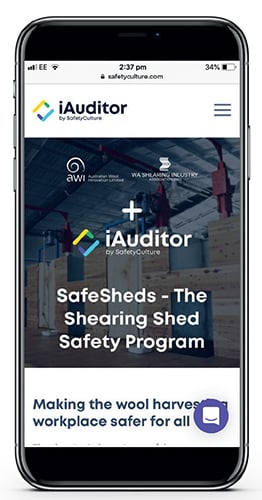
The cover and example page of the best practice guidelines and checklists from the Shearing Shed Safety Program, SafeSheds.
SafeSheds is available as an 80-page booklet with four sections:
- Legal obligations of people involved in shearing
- Guidance on how to assess their current shearing shed and manage risks
- Detailed best practice guidelines for all areas of shearing operations
- Module 1 – The shearing shed
- Module 2 – Machinery and equipment
- Module 3 – Amenities and facilities
- Module 4 – Work practices
- Module 5 – General working conditions
- Assessment checklists
- Full assessment
- Pre-shearing checklist
- Induction checklist
- Post shearing checklist.
The SafeSheds booklet is available in downloadable PDF format in full, or in separate sections, from the AWI website at www.wool.com/safe-sheds or you can order a hard copy by phoning the AWI Helpline on 1800 070 099.
SAFETY CHECKLISTS ON YOUR MOBILE DEVICE
The SafeSheds checklists are also available in a handy mobile, digital, interactive format – available to download and use for free.
The tool allows woolgrowers and shearing contractors to self-assess their wool harvesting workplace and work together to identify and rectify safety hazards from their mobile device.
Woolgrowers and shearing contractors can use the app for multiple sheds and properties and provide access to employees or shearing teams to record issues. It all works offline, even if you are in a location with poor or no mobile reception.
The SafeSheds digital checklists are available via the AWI website at www.wool.com/safe-sheds






